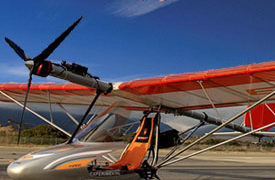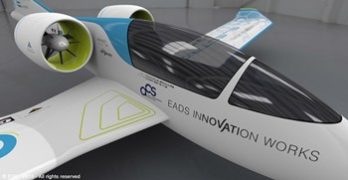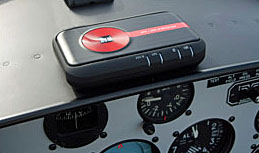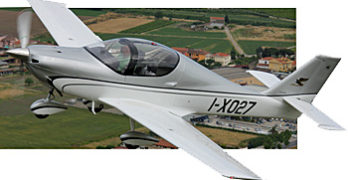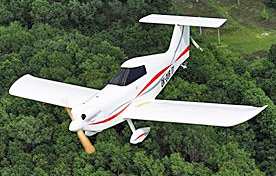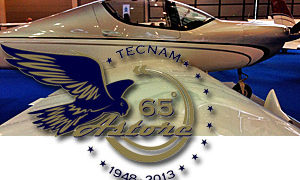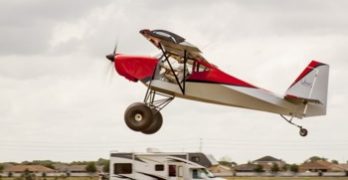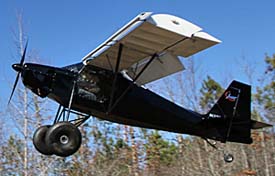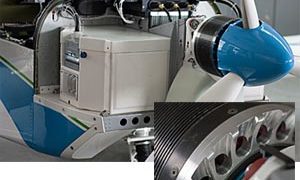Once upon a time the light aircraft industry announced new manufacturers and models at the rate of two, three, or even more every month …for several years. As with every maturing industry before, this torrid pace had to slow. Yet the party isn’t over, far from it. Contrarily, I am aware of several new projects in the works and we all know of some (Icon, Terrafugia, Lisa among others) where companies have been working on their designs for some years but they have yet to secure FAA approval as a Light-Sport Aircraft. Neither has GreenWing International, a new company announced this week though that may change quickly enough.
“Yuneec International, a world leader in electric power systems, is proud to announce the formation of GreenWing International, [which is] entirely focused on bringing the revolution of electric power to the global general aviation market,” announced company CEO Tian Yu. Enthusiasts following electric powered aircraft development first saw Yuneec’s e430 at AirVenture 2009.
Search Results for : Flight Design
Not finding exactly what you expected? Try our advanced search option.
Select a manufacturer to go straight to all our content about that manufacturer.
Select an aircraft model to go straight to all our content about that model.
Fantasy in Paris — Electric Twin & More
“How ya gonna keep ‘em down on the farm … after they’ve seen Paree?” That’s a timely reprise of an old show tune to bring our attention to the Paris Air Show, which is sending out some ripples in the “What’s New” Dept. Chances look better every year that electric flight will be a major player in how we take the air. And for those of you who think that’s just a bunch of hot air, you could be right, too! Read on.
Jason Paur who writes for Wired magazine gets to do all the fun stuff I just get to fantasize about … specifically, electric flight. He’s at Le Bourget Field in Paris and filed this report on an exciting new electric prototype that fits nicely into the Light Sport Aircraft specification. Here are some highlights and you can read the rest first hand at the link above.
Dual GPS Is More Than a Panel Top Gizmo
Aviation has embraced tablet computers like iPad to an extent no one would have imagined only three years ago. These devices are being used for far more than showing a sectional map or approach plates. In fact, with companies like Tecnam supplying Apple’s iPad Mini as standard equipment in their new Astore LSA model, these tablets are serving as more than reference or information tools. They can now act as Primary Flight Displays. They can show weather and identify airborne traffic. I’m reasonably sure even the bright folks in Apple’s engineering department never foresaw such a use, but their iPads can be seen all over the aviation spectrum.
To make tablets like iPad or those running Android more functional, we began to rely on panel top devices. Tablets and smartphones weren’t designed to work aboard aircraft. One early leader with panel top gear was Dual Electronics, which formed an aviation division to market their capability.
65 Years Later … Tecnam Astore Flies!
I just wrote about Van’s Aircraft, a 41-year-old company that just came out with their first ready-to-fly airplane. Now I want to talk about a 65-year-old company and a 65-year old airplane design, Astore. First came a 1948 Astore. Recently the 2013 Astore — just unveiled to the public last month at the Aero show — took to the air on its first flight. The Italian company showed again that they can take one of Professor Luigi’s new designs and achieve it in a remarkably short time. Head of Aircraft Design for Tecnam through the decades, Luigi Pascale will celebrate his 90th birthday later this year. As a young man he designed the first Astore and many more aircraft since. Yet this senior engineer seemingly doesn’t need a rest. Company Managing Director Paolo Pascale said of his uncle, “He is enjoying the design work … it keeps him alive!” Watch our
video interview with Paolo to hear more about the new model.
End of May 2013 LSA News Wrap
Single Seat Darling — Perhaps it’s because we haven’t had so many new SLSA offerings lately (though don’t look away too long as more are definitely on the way!). Maybe it’s because the new airplane is a single seater. Certainly we have not had many single seater SLSA … well, none so far, but that, too, is going to change with the Snap aerobatic aircraft and the electric-powered Yuneec eSpyder working on SLSA approval as one-place airplanes. It could be the low price tag. No question that a price under $60,000 for a ready-to-fly Special LSA is attractive. However, I’m always amazed at conventional aviation magazines droning on about the “high cost” of LSA when, in fact, we have many aircraft offered at below $100,000, several below $80,000, and a handful for even less the new SD-1 Minisport (and the other low-priced LSA are all two seaters).
Finishing Four Amazing Days at Aero 2013
Airplane Overload — Imagine a gymnasium, the full court kind where basketball is played. Imagine ten of them placed side by side. Big space, huh? Now imagine all of them filled to capacity with aircraft and airplane gear of every imaginable sort. Presto! You’ve got Aero Friedrichshafen. No wonder we go year after year (I think this was my tenth Aero and, for certain, I’m going again). In this wrap up post, I’ll provide a few more views of this truly excellent event. Good as my reporting hopefully is, however, true-blue aviation enthusiasts owe it to themselves to make the trip to the southern edge of Germany for this outstanding (nearly) all-indoor aviation extravaganza. I can find so many good reasons to like Aero, I’m sure you’d be pleased if you attend.
Final Facts and Videos — Aero Show Director Roland Bosch somehow made time in what must be an awesomely tight schedule to let us tape a video with him and his U.S.
Live From Sun ‘n Fun 2013
SuperStol: Able to leap tall RVs at a single bound. Drawing lots of attention is the Just Aircraft SuperStol LSA kitplane (soon to be an SLSA) that has self-deploying leading edge slats, oleo main gear shock-absorbing struts (with humongous tires), even a shock absorber for the tailwheel. I found out later I was the first flywriter to get some time in the critter. Whether true or not, I felt like a kid on his first flight again: what a fun airplane! True — and amazing — STOL performance befitting a Helio Courier-style plane. My report will be out soon in Plane & Pilot magazine.
It’s the third day at Sun ‘n Fun. Breezy, hottish (high 80s), humid: in other words, classic Florida Spring weather. The attendance seems steady if not overwhelming. I’ve been hanging out a lot in the new Paradise City Light Sport/Ultralight area and grass landing strip in the southeast corner of Lakeland Linder Airport, and enthusiastically report it is vastly improved over previous years.
Pre-Sun ‘n Fun 2013 LSA News Wrap
CORRECTION 4/10/13 — Due to a misinterpretation of Just Aircraft’s recent news release I must update an earlier report. The company did indeed take its 300th order but it was for all versions of the Highlander model, not just the SuperSTOL. At Sun ‘n Fun 2013, company leader Troy Woodland confirmed very strong interest in the STOL model and expects around 60 orders in the first year since it was introduced. The big plus of my conversation with Troy is an impending flight in the remarkable-flying SuperSTOL, which I will report as soon as possible. Amazing SuperSTOL! — We’ve got a few news items as we head to Sun ‘n Fun where lots more will emerge. One of the big pre-show items was news from kit and SLSA producer Just Aircraft who reported the number 300 order for its Highlander. On a visit en route to Oshkosh last summer we stopped to visit the company and saw the SuperSTOL design taking final form.
Electric Avenue Widens; Evektor Motorplane Flies
An “engine” is a machine distinguished from an electric, spring-driven, or hydraulic motor by its use of a fuel, by which most mean gasoline or diesel fuel. An electric powerplant is often referred to as a motor to make it distinct although “motor” is defined as a device that converts any form of energy into mechanical output, which would include engines.
Without fretting over the definition, Evektor flew their new “motorplane” (my word) recently and this post presents our view of this accomplishment. We’ve reported several electric aircraft projects, for example, Yuneec’s Spyder and their larger e430 mentioned in my full-length article on electric aircraft. We’ve also covered Randall Fishman’s ULS (which will be on display in the LSA Mall at Sun ‘n Fun) and several others. To read all our 37 articles of coverage, type “electric aircraft” in the Full-text Search box on our Search page.
UltraCub (Belite)
[UPDATE — fall 2009: This article about the Kitfox Lite refers to a company now several years out of business. The new Kitfox producer sold the Kitfox Lite design to Kansas entrepreneur, James Wiebe. His company, Belite Aircraft, now produces the Belite Carbon 254 (and other variations) and has significantly changed structure with carbon fiber components to lighten the weight, assuring that it meets Part 103. For the latest info on their offerings, contact the company directly.
Information in this article, while similar to what Belite Aircraft produces today, will not be identical to the new model. –Dan]
Kitfox Lite: tastes great; less filling One the best-selling kit-built aircraft of all time is the Kitfox series. First designed by Dan Denney for a company bearing his name, the airplane is now marketed in several variations by SkyStar. As ownership passed, the market matured and SkyStar astutely chose to widen the appeal of the well-known Kitfox name.
- « Previous Page
- 1
- …
- 92
- 93
- 94
- 95
- 96
- …
- 147
- Next Page »


